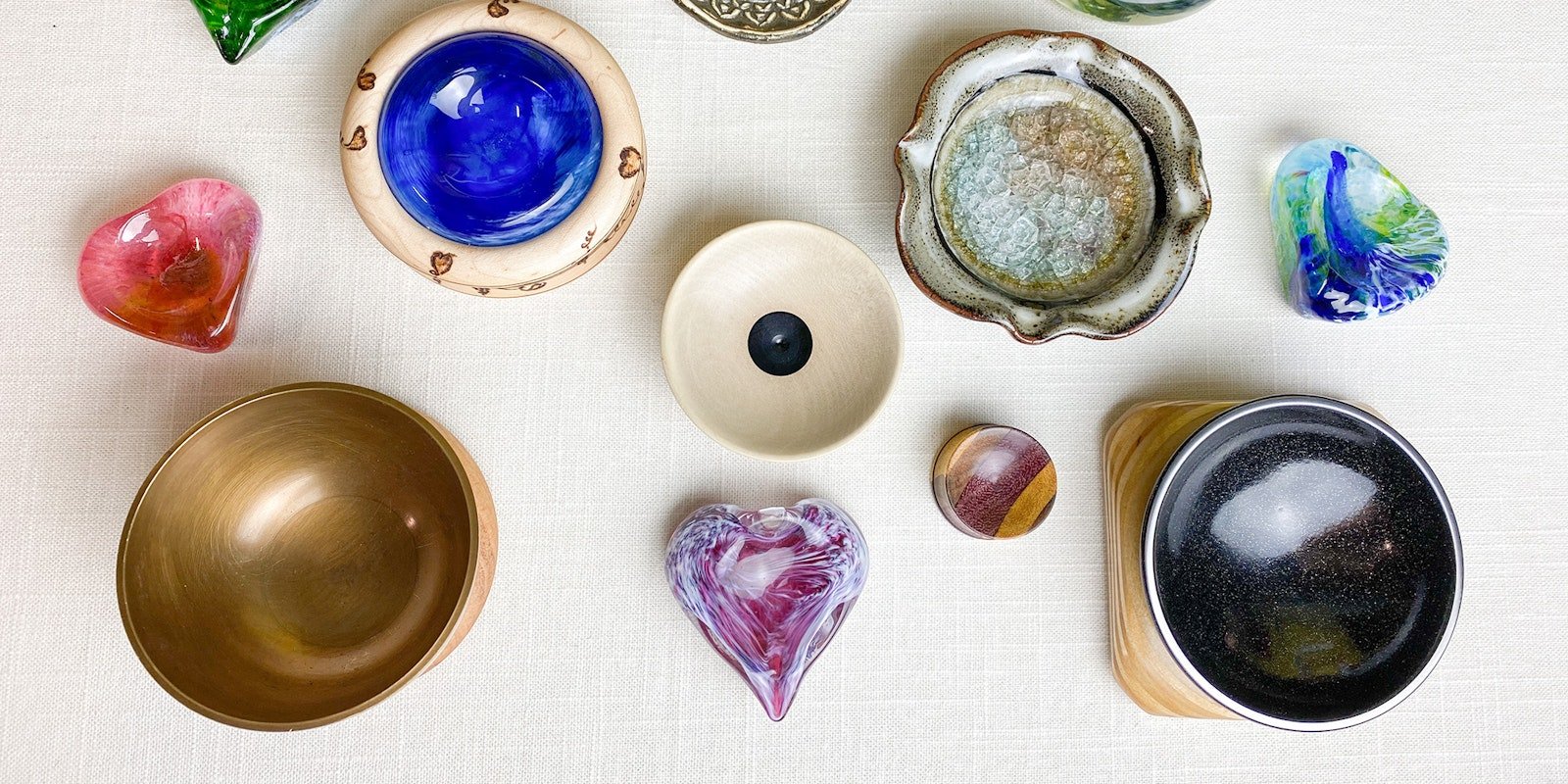Contents
The whimsical nature of a supported spindle in motion is hard to ignore. While many support spindles display jaw-dropping qualities and are rightfully described as exquisite works of art, their elegant glide can be attributed to their point of contact with a compatible surface, usually a bowl. In this case, some bowls are a much better fit than others—one size does not fit all.
Each individual spindle will respond to a given bowl differently, yet a suitable bowl will improve the spinning experience in many ways.
The right bowl will:
- Reduce friction between its surface and the bottom of the spindle.
- Offer a long duration of spin time for each flick of the spindle.
- Enable the spindler to spin comfortably when the spindle and bowl are placed on a desired surface, such as a spinner’s lap, a table, or in the case of a Navajo spindle, the floor.
How can one spinner sort through so many beautiful bowls of various shapes and dimensions? Here is my approach to finding the right bowl for the job.
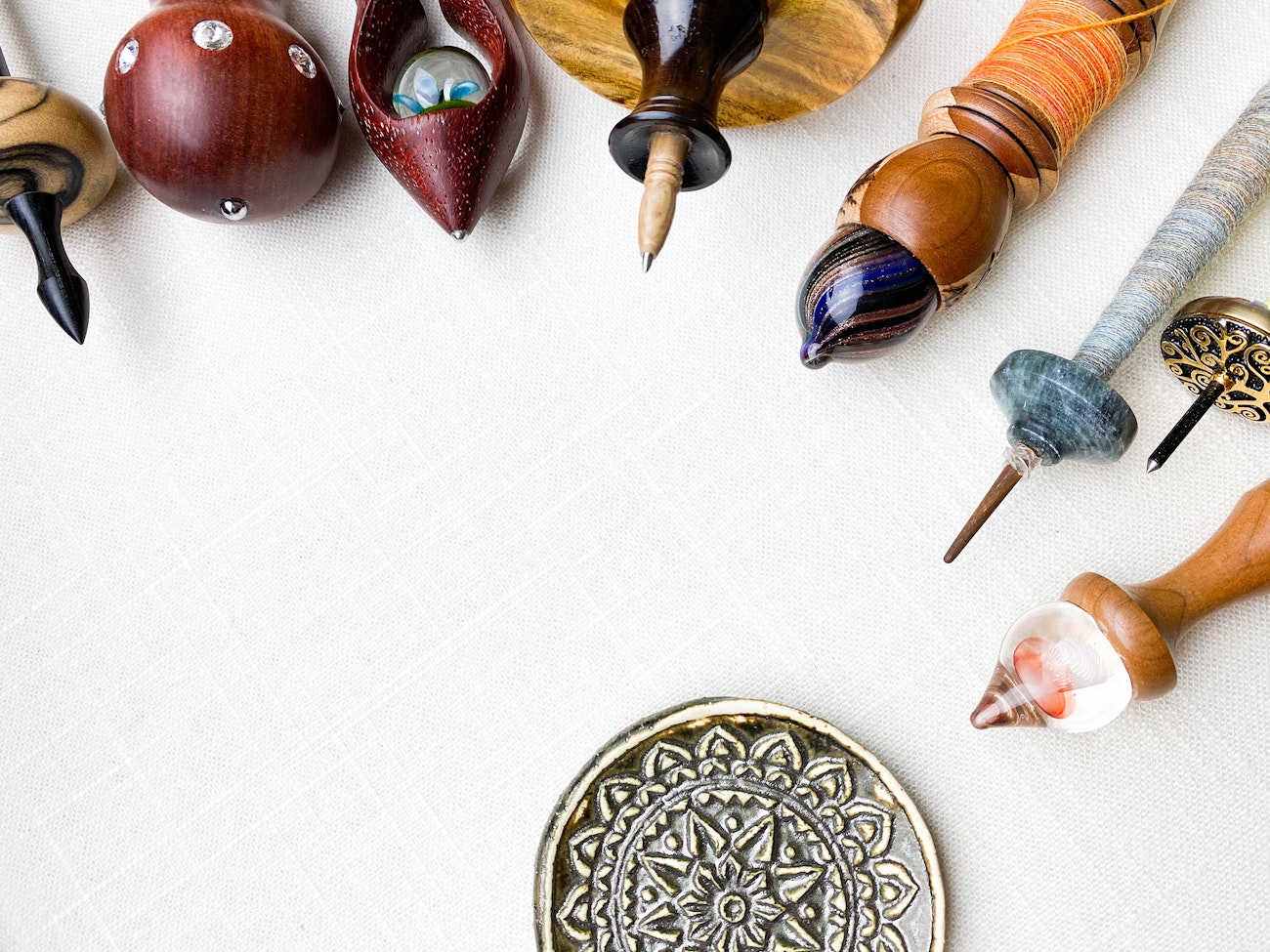
Note the material used for the tip of your spindle. This information will help you select a bowl.
Where to Begin
Select one supported spindle from your stash. Carefully inspect your spindle and take note of its shape and material composition, giving special attention to the bottom of the spindle. Is it a wooden spindle with a tapered point on the bottom? Does it have a ball bearing or a metal or glass point on its end?
Look around for bowls that you have on hand that can be repurposed for supported spindling. An ideal bowl will have a very smooth surface, free of cracks, raised bumps, or irregular dents or holes. Make sure the bowl provides enough space for a support spindle to spin and roam freely without the fear of a collision resulting from a whorl or decorative element hitting the sides of the bowl. Test out the bowls to see whether the spindle will spin uninterrupted on the surface of the bowl. For a short, shallow bowl, I prefer the diameter of less than 3½" and an overall height of 1¼" or less. In my opinion, shallow bowls are more versatile for various supported-spindle styles than taller, steeper round-bottom bowls. For a tall bowl, the diameter must provide adequate space for collision-free spinning, and taklis are well-suited for these types of bowls.
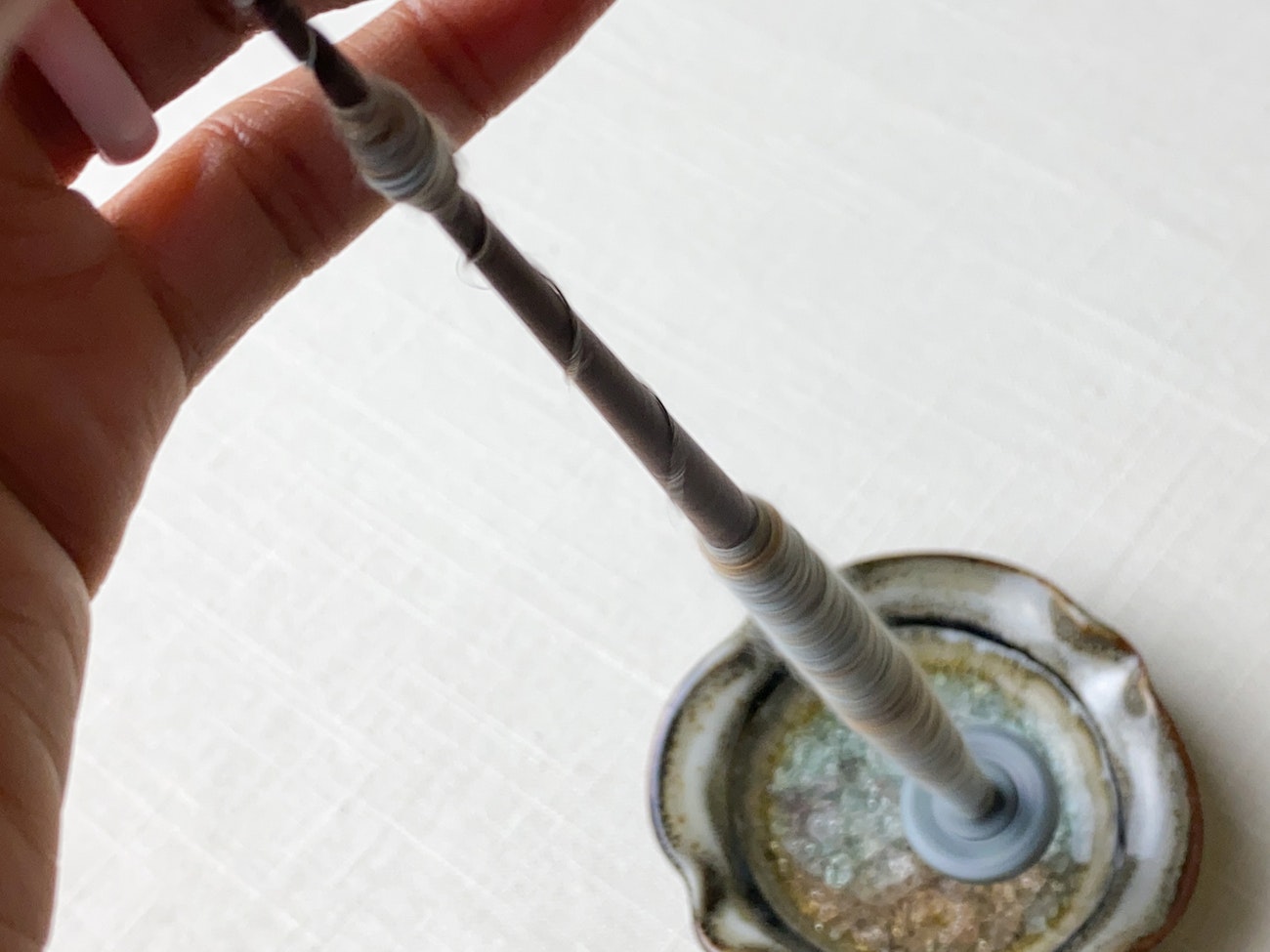
Make sure the wooden tip of your spindle is in contact with the bowl when you flick the shaft to extend the life of the tip.
Try different bowl materials, including wood, glazed or unglazed ceramic, glass, and metal. Spindle makers will often have matching bowls suitable for use with their spindles or suggest appropriate bowl materials. You might find more than one bowl gives you the results you are looking for. Make note of what spindle-and-bowl combinations work well. For example, when testing a wooden-tipped spindle, make sure the bottom of the spindle can make full contact with the bowl before flicking, or the surface of the bowl can cause wooden tips to wear down faster than they should especially when spinning on a hard surface, such as glazed ceramic. And take extra care when testing bowls for supported spindles with sharp, metal tips; these points can cause punctures or scratch marks on some surfaces.
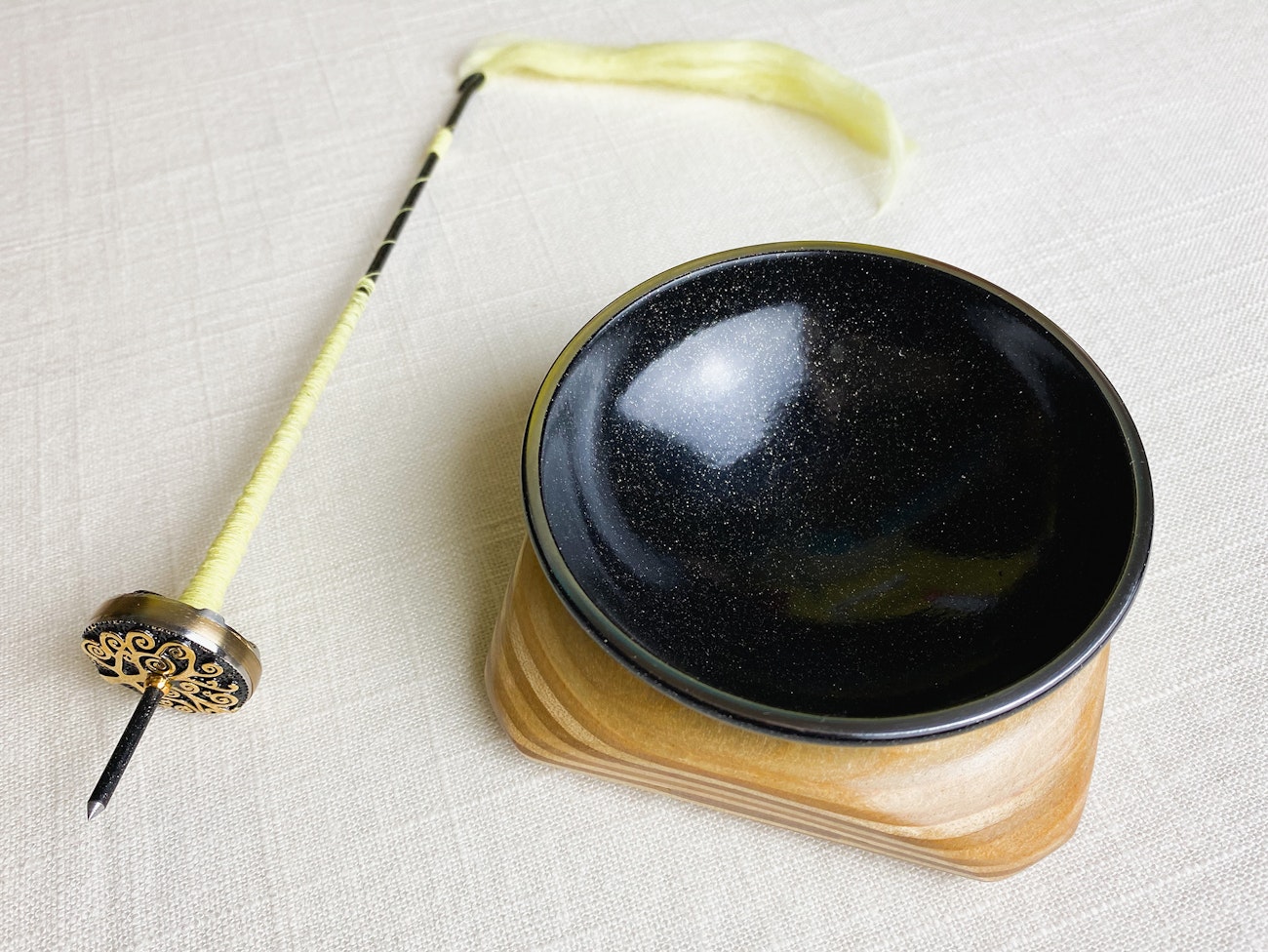
The extra weight provided by the wooden base helps this bowl stay put when spinning with a takli.
Try out spindle-and-bowl combinations in different scenarios and note your physical comfort. For example, I like to test a potential bowl on my lap while sitting on a couch or in a comfortable chair, and then I test it again while I am propped up in bed with a small pillow underneath the bowl. These are my favorite places to lounge and relax while at home; try out yours. Be sure that the position allows the shoulders to relax when drafting without causing pain or discomfort. During this process, you might discover a perfect spindle/bowl pair or a bowl that works well for more than one spindle. My favorite bowl is a gift-shop souvenir—a beautifully glazed ceramic bowl with a crackled glass design. It’s shallow with a slick surface and has enough weight to sit on my lap without toppling over. My favorite spindles to pair with this bowl are support spindles with ball bearings on the bottom.
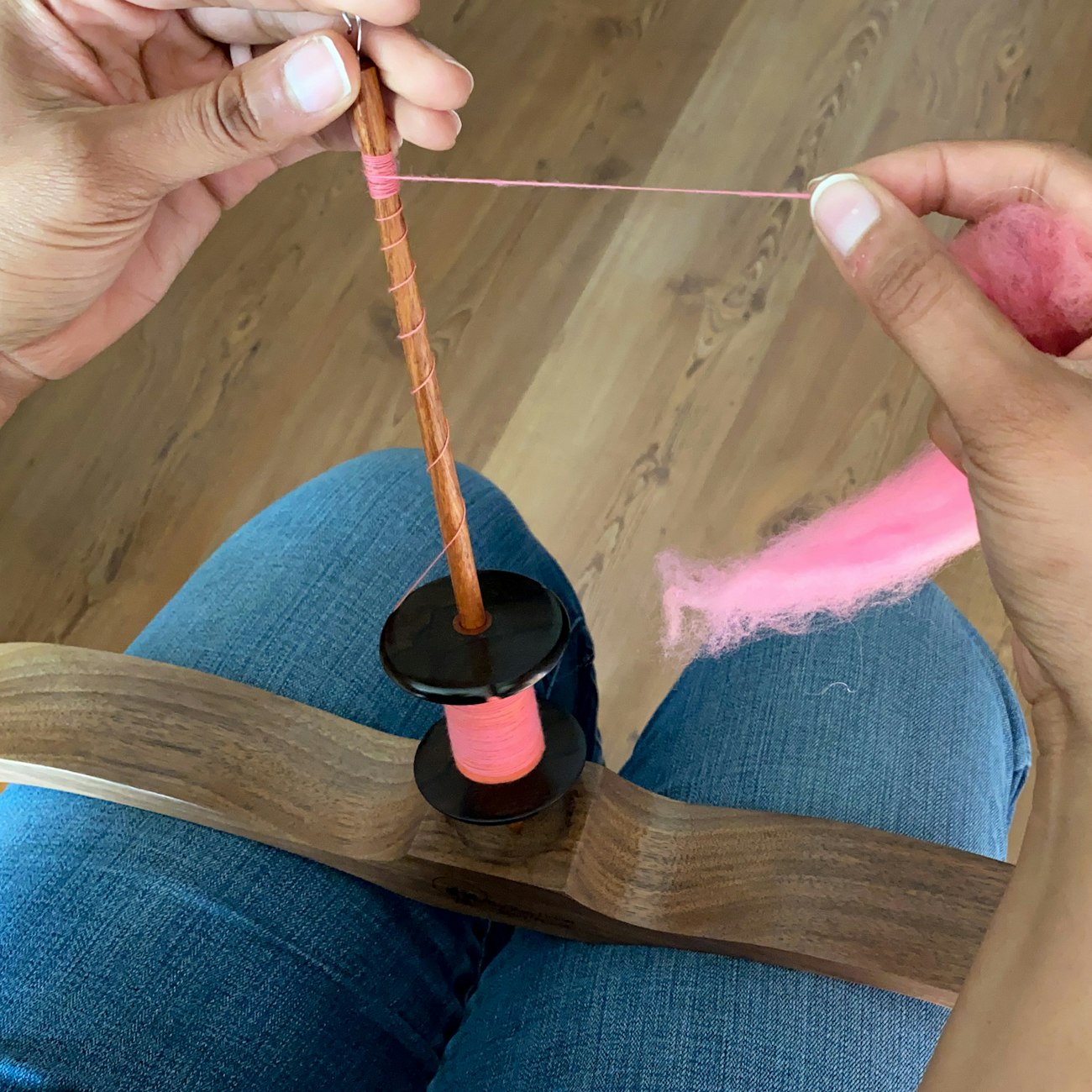
This wooden bowl was designed for lap spinning.
Styles, Shapes, and Sizes
Don’t limit yourself to a standard bowl shape. There are various types of bowls with options to suit different spinning situations, from lap bowls or chalices to live-edge wooden bowls. One of my spindle bowls has a tiny dimple in the middle, which allows the spindle’s pointed tip to nestle into the space and spin for what seems like forever. While these bowls are great, some spinners prefer to use the entire surface area of the bowl.
As I mentioned above, spindle makers will often pair bowls with their spindles, and the bowl may or may not work well for other spindles. But some makers will offer more universal bowl options made from metal, ceramic, or wood, which can be attached to surfaces, or they’ll create a bowl shape, for instance within a flat slab of wood, to provide a bowl with a sturdy base.
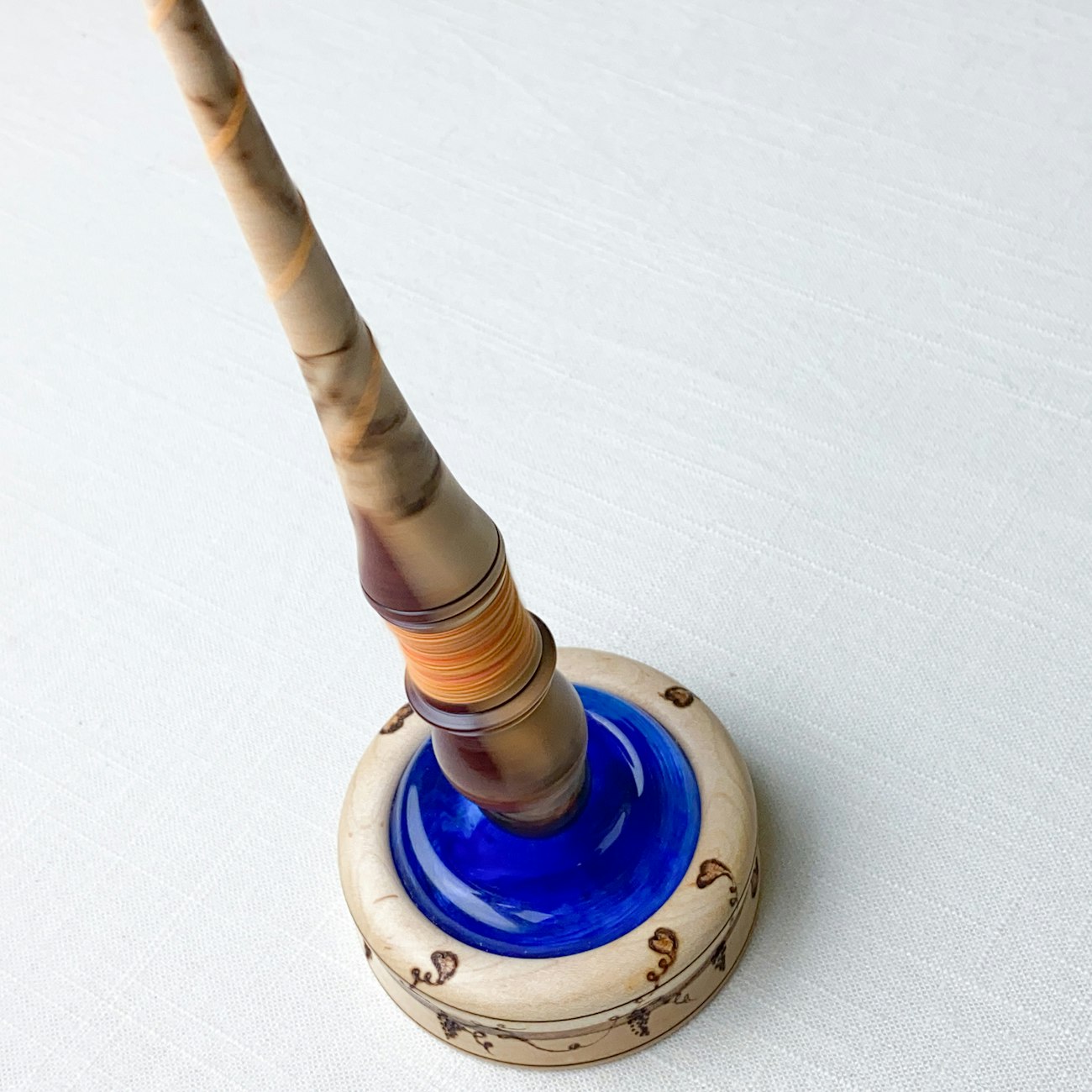
This glass-tipped spindle and glass bowl make a good pair.
Care for Spindles and Bowls
After you test different bowls, it won’t be long before you find a few, or more, treasured favorites and perfect spindle/bowl pairs. Be sure to take good care of your spindles and bowls. Your spindles will thank you for it.
- Inspect them often. When your spindle shows signs of wear, contact the spindle maker for recommendations about repairs.
- If you find that your wooden bowls need a little pick-me-up, apply a tiny amount of carnauba wax to its surface. You’ll be amazed at how smooth of a finish you can get.
Happy spinning!
Heavenly
Originally published December 18, 2020; updated December 12, 2025.

